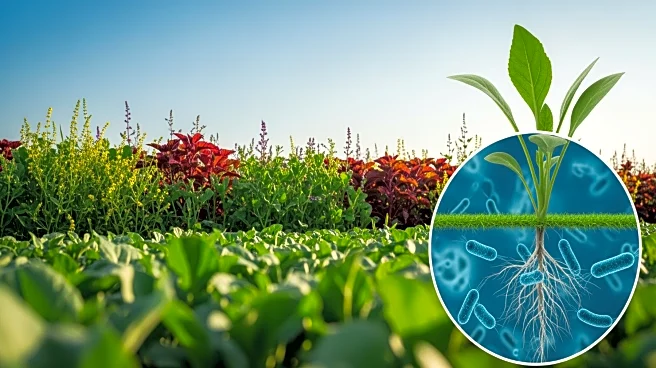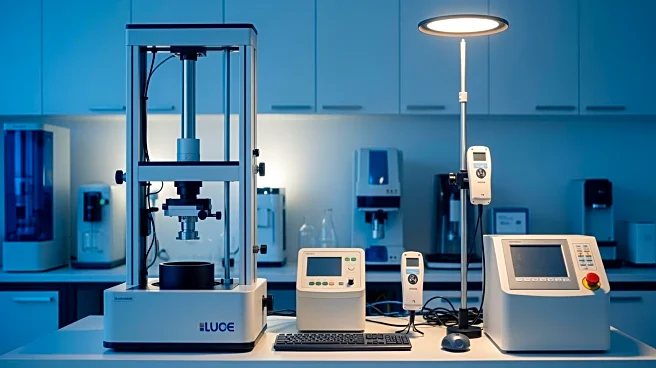What's Happening?
The agricultural microbials market is expected to grow from USD 7.50 billion in 2025 to USD 14.30 billion by 2030, driven by increasing demand for residue-free and sustainable crop solutions. This growth
is fueled by rising soil health awareness, high fertilizer prices, and consumer preference for organic food. Farmers are adopting microbial-based fertilizers and pesticides to enhance nutrient uptake and yield while reducing reliance on synthetic chemicals. Technological advancements in AI-powered strain discovery and synthetic biology are accelerating adoption, particularly in the Asia-Pacific region.
Why It's Important?
The expansion of the agricultural microbials market signifies a shift towards sustainable farming practices, which can reduce environmental impact and improve food safety. This trend supports global efforts to decrease chemical residues in agriculture, aligning with initiatives like the European Union's Farm to Fork Strategy. The market growth presents opportunities for agritech companies to innovate and expand their portfolios, potentially leading to increased profitability and market share.
What's Next?
Governments worldwide are expected to continue supporting microbial adoption through subsidies and incentives, promoting local manufacturing and rapid market expansion. Technological innovations in AI and genomics will likely enhance microbial product development, improving efficacy and scalability. The market's growth trajectory suggests ongoing investment in research and development, fostering advancements in sustainable agriculture.
Beyond the Headlines
The rise of agricultural microbials reflects broader environmental and economic shifts, emphasizing the importance of regenerative agriculture and sustainable food systems. As microbial products become integral to farming, they may influence global agricultural policies and practices, contributing to long-term ecological resilience.











